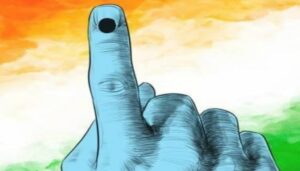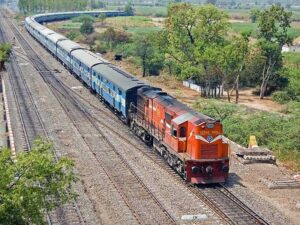Book Review: India’s Battles From Kurukshetra To Balakot

Maj Gen Jagatbir Singh (Retd), VSM
26 May 2021: Colonel Ajay Singh and his wife Monisha Naik Singh have written what can be considered as the most comprehensive account of India’s Battles over the centuries. The book published by Pentagon Press in 2020 covers 42 of India’s most significant battles over five thousand years right from the epic battle at Kurukshetra to Balakot in 2019.
Ajay makes it clear in the preface itself, “Indian warriors were invariably skilful and individually very brave and courageous. But military leaders neglected the organisational structure of their armies. They did not adapt to new concepts of warfare and often remained rooted in the past. Nor did they embrace technology…. They were always too busy battling each other instead of an outsider. And that was the cause of their defeat and for the centuries of subjugation that followed.”
He terms the Battle of Kurukshetra as one which had the most powerful impact on the Indian psyche – especially in its emphasis on ‘dharma’ and hero worship. In the battle, all the participants broke the rules of dharma, and twisted them to suit their ends. However the “the concept of dharma and of fighting only righteous wars” remained in the Indian psyche for centuries thereafter, and perhaps shaped our pacifist nature.
The viewing of the battles through an Indian perspective – is what gives them a different outlook. He is scathing in criticism and warm in praise and still brings out the battle in an objective and unbiased manner. In fact, the battles have been named as per the actual Indian names – and not the names they are often known by. I.e. The Battle of Plassey is called Palashi, and the Battle of Seringapatam is called Srirangapatnam after the original names of the site where they took place.
The seminal battles of India have been emphasised in some detail. The defeat at Tarain in 1192, which he regards as the ‘turning point in Indian history’ took place, because Prithviraj Chauhan became so overconfident after his victory in the first battle. In the second battle of Tarain, just a year later, the Rajputs were simply swamped by fast-moving fire and maneuverer. They were still rooted in the conventional concept of battle and India paid a terrible price for that.
Similarly, Babar too used maneuverer and the technology of gunpowder to carve a 300-year empire. In six hours of battle, he defeated Ibrahim Lodhis’s vast force at Panipat and established Mughal rule in India. Even more significant was the defeat of the Rajput confederacy under Rana Sanga, in 1527. Mughal cannons and mortars countered Rajput charge “with a storm of fire that valour and individual skill could do little against”. The Rajput’s continued to hold on to their kingdoms but could never present a unified front again.
Turning points also play a great part in the outcome of a battle; in the Second ‘Battle of Panipat’ in 1556, Hemu’s army was “on the cusp of victory” when an arrow hit him in the eye, leading to panic in the leaderless army. An arrow had changed the course of history. The sudden rainfall during the Battle of Palashi in June 1757, which wet the gunpowder of Siraj-ud-Daulah’s guns (which were not covered by tarpaulins) and rendered them ineffective, led to a stunning British victory. How weather played a role in battles provides important lessons which were not lost on Field Marshal Manekshaw when he rightly chose to launch the offensive into East Pakistan after the monsoons in 1971.
Treachery is another aspect that has been highlighted. In 1565 at the ‘Battle of Talikota’ on the banks of the Krishna river, which brought down Hindu rule in South India, the betrayal by the Gilani brothers Noor Khan and Bijli Khan cost Rama Rajya of Vijayanagara his kingdom against the armies of the Deccan Sultanates. This was to be repeated by Khalil Ullah Khan a trusted general of Dara in “Samugarh” in 1658, resulting in Aurungzeb ascending the throne and unleashing a wave of bigotry and divide in society which exists even today. In ‘Battle of Plassey’ the traitor was Mir Jaffer, in the ‘Third Battle of Panipat’; the Holkar’s and Scindia’s “melted away from the battlefield”, Mir Sadiq, Tipu Sultan’s Chief Minister was in communication with the British in 1799 ann the “Anglo Sikh Wars’ in 1846 it was Lal Singh and Tej Singh two trusted generals of Rani Jindan who conspired to defeat the Sikh Army. The weakness within has always been exploited by the adversary and led to devastating consequences and changed the path of history.
The Battle of Haldighati in 1576; which stands out as a tale of valour is an interesting study. Why Rana Pratap chose to leave the strong defensive positions of Haldighati to fight in the plains has yet to find a satisfactory answer. The bravery of Rana Pratap and his exploits on Chetak is now folklore. But who won? Tactically Rana Pratap had lost but Akbar was unable to achieve any of his strategic goals. His guerrilla war continued till his death in 1597- “unbowed and undefeated”.
The use of an unexpected approach always reaps rich dividends. No objective is impregnable. This has been demonstrated during the capture of Sinhgarh Fort in 1670 by Tanaji and his troops. They scaled the walls from the unexpected western direction of Dongri Cliff and captured the fort. Many years later in 1965, Major (later Lieutenant General) Ranjit Singh Dayal would do the same in the audacious capture Haji Pir Pass and in the year 1987 Naib Subedar Bana Singh would scale a vertical ice wall to capture the impregnable Quaid post in Siachen at a height of 21,153 feet, “the highest spot in the world to have seen combat.”
Manoeuvre Warfare enabled the Maratha’s under Baji Rao I
to overcome an enemy much greater in size through a series of manoeuvres. His victories in the Battle of Palkhed and Bhopal enabled his fast-moving cavalry to surround a much larger enemy and force them to capitulate with minimal fighting. The Marathas fast-moving cavalry travelled light, with no excess baggage whatsoever. It was ironic that they would forget these very tenants of mobility and speed, which contributed to their defeat at Panipat in 1761.
‘Unrestricted Warfare’ is a book by two Chinese Colonels; ‘where there are no rules and nothing is forbidden ‘can sum up the years of British rule. They entered by sea, posed as traders, refused to pay taxes, got troops of a Company to protect their factories and then plundered and ruled India by treachery, deceit, loot, exploitation, induced famines and left after dividing it. Ajay has covered some of their major battles; Plassey, Buxar in 1763, Srirangapatnam, Bhima Koregaon in 1888, Anglo- Sikh Wars 1846 and The First War of Independence in 1857.
The post-independence battles have been covered in considerable detail, including the overall war, and significant battles that took place within it. Beginning with the 1947-48 Kashmir war and going all the war to Balakot in 2019, it traces the Liberation of Goa, the 1962 India-China War, the wars with Pakistan and even actions in Sri Lanka and the Maldives. The book lays great emphasis on the 1971 War – covering not only the overall War but also individual actions like Longewal, Basantar, Garibpur, the naval raid on Karachi and the Air War. It was a complete victory with perfect synergy between all three Services which was perhaps the watershed moment of Indian history.
The book brings out the premise that “Those who do not learn from the lessons of history are condemned to relive it.” And with reason. The same divisiveness that led to centuries of subjugation now seems to be creeping up again. We must learn from the lessons of history and not repeat the mistakes of the past.
Well written, and researched, ‘India’s Battlefields’ is an excellent book and whets the appetite for detailed study of each of these battles. It’s readable, educative and interesting. Most readers only read tales of the glorification of wars and war, and rarely the weaknesses which bedevil success. Public interest in defence has never endured. National security is of vital importance, the whole of nations approach is the only path to take for the future.









